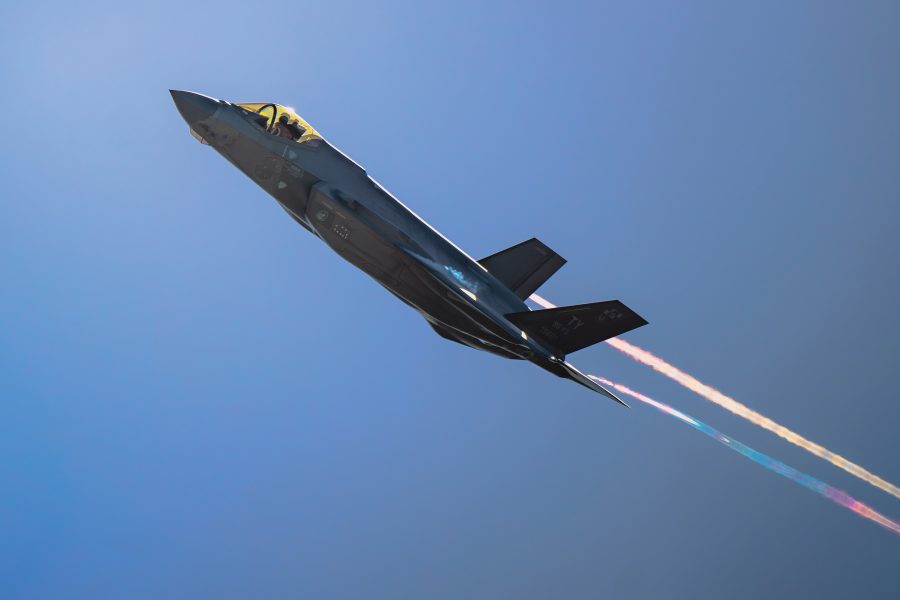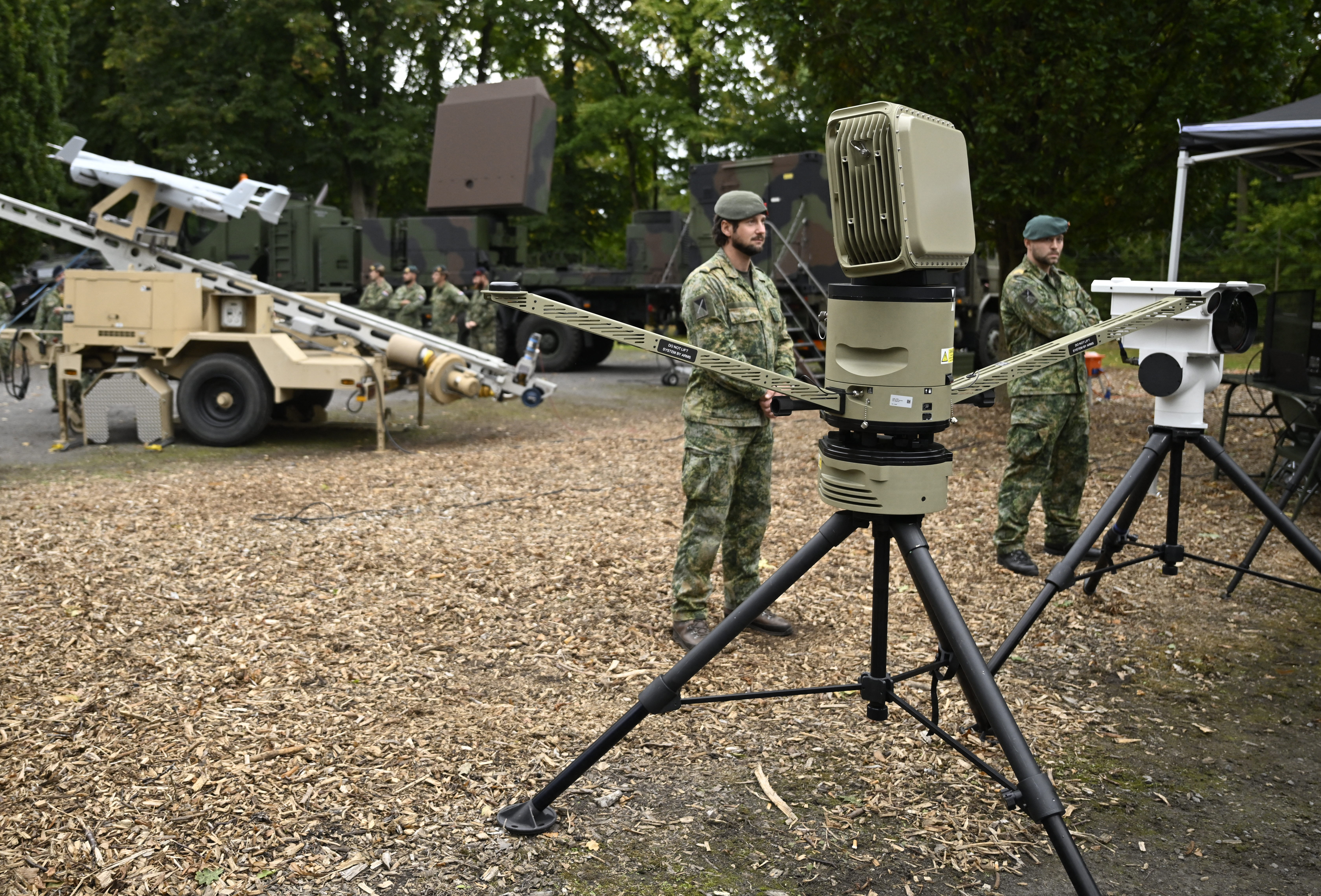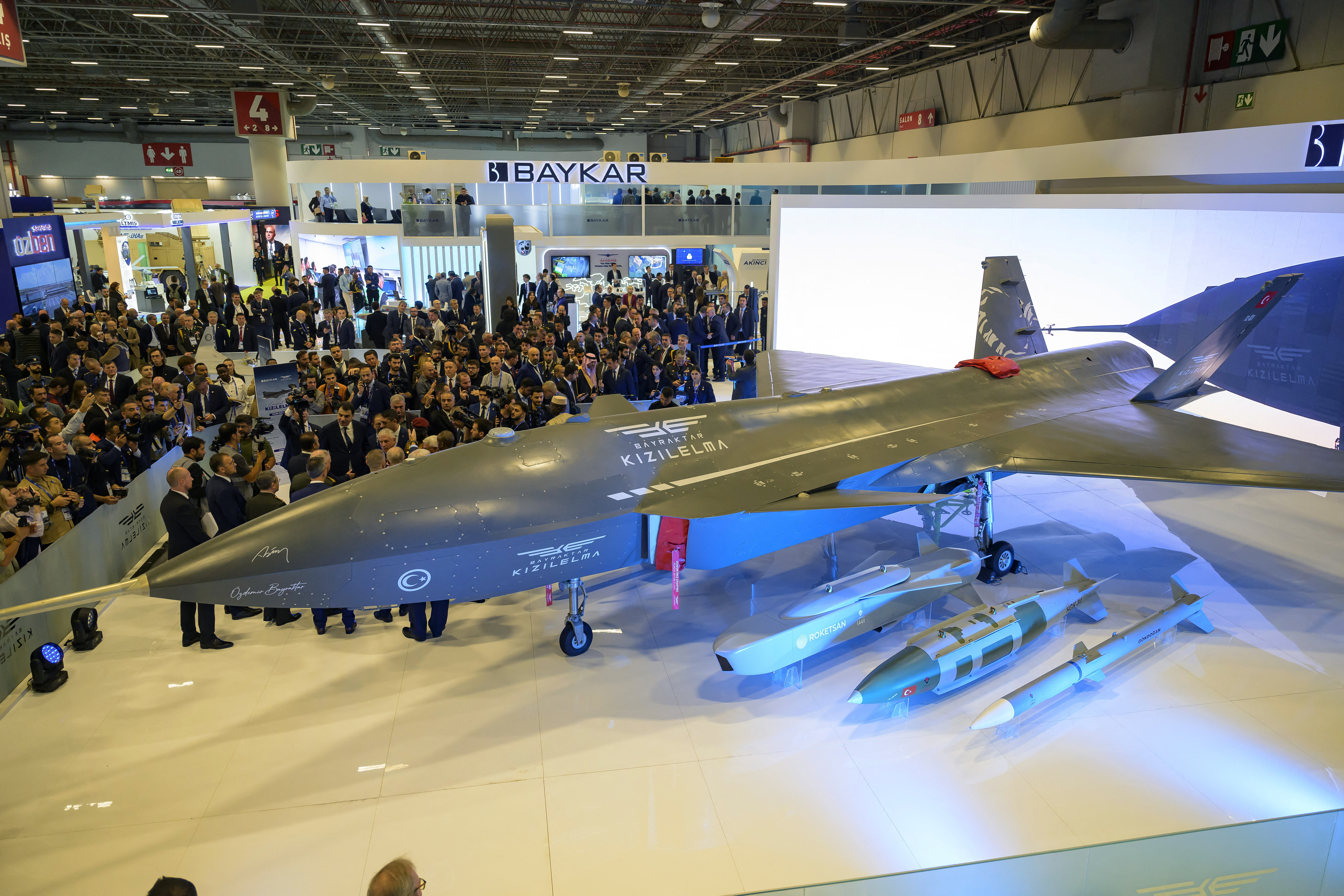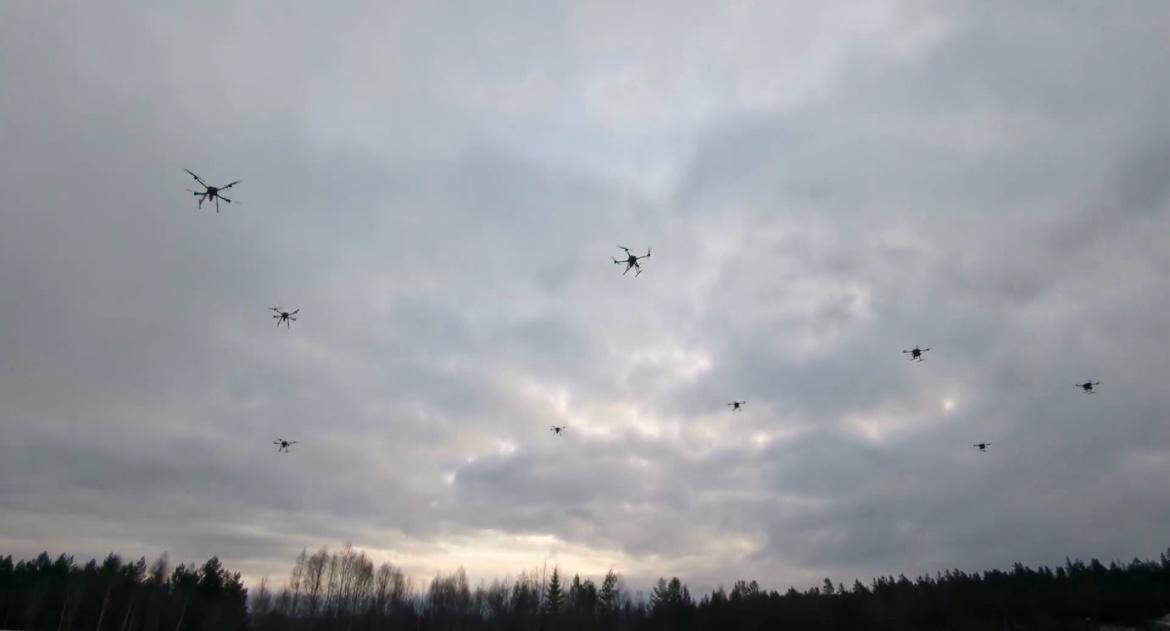
Lockheed Martin chief executive officer Jim Taiclet renewed his call for a substantial upgrade of the F-35 with technologies his company developed for the Next-Generation Air Dominance program, which it lost out on to Boeing in March. Taiclet said the upgrade would be an important “bridge” to the newly designated F-47, which he predicted could be a decade away from service.
Lockheed also announced $1.6 billion in losses in the second quarter, mostly due to a $950 million charge against a secret Skunk Works unit aeronautics program. Lockheed stock dropped six percent for the day on the news, rebounding after a nearly nine percent drop.
F-35
Taiclet touted both the air-to-air and air-to-ground performance of the F-22 and F-35 in the recent strike on Iranian nuclear sites and said the aircraft are now “combat proven” under tough conditions. The aircraft were also heavily involved in “the orchestration of numerous other platforms” in that mission, he noted, including satellites and other aircraft.
Given that performance—and strong interest in new orders from five or more countries, including repeat customers—Taiclet said the F-35 is “here to stay, in a big way, for a long time.” It’s “the only fifth-generation fighter aircraft in production right now and it’s proved itself in combat. So we will continue with our allies and with our U.S. customer to be delivering these aircraft.”
He also pitched that the F-35 be substantially upgraded—in previous venues, he called it a “Ferrari” upgrade—which he said could deliver 80 percent of the NGAD capability at 50 percent of the price.
“We did bid on NGAD. Everyone knows that we weren’t selected, but the pivot that we made is one that we’re taking incredibly seriously, which is, how do we create a best-value bridge from today’s fifth generation to sixth generation?” he said. Lockheed can apply the technologies it developed for NGAD to the F-35, he said, and it could be the “best value option” for the U.S. government.
“NGAD … may not be fielded for quite a few years,” he said, later suggesting it could be “five-plus, maybe 10 years.” In the interim, the F-35 is “the only fighter I’m aware of that can actually make that bridge” to a new air dominance structure for the U.S., he argued.
Taiclet’s push comes at a pivotal moment for the F-35 program.
The Pentagon cut back its F-35 purchase in the proposed 2026 budget to just 47 fighters across the Air Force, Navy, and Marine Corps. Taiclet noted that Congress is moving to add some jets back, with the House Appropriations Committee boosting its version of the spending plan to 69 aircraft and the Senate Appropriations Committee at 57 aircraft.
Deliveries were paused for a year into mid-2024 due to issues testing the Tech Refresh 3 upgrade, but Taiclet said Lockheed has completed hardware integration for TR-3, which underwrites the Block 4 slate of some 80 F-35 improvements.
“Earlier this month, we released new software to complete, continuing our maturation/building of advanced Block 4 capabilities,” he said. “This update improves the pilot interface and provides additional weapons and electronic warfare features.”
The delivery hold created a backlog, but Lockheed expects to deliver between 170 and 190 F-35s in calendar 2025, Taiclet said, with 97 so far and 207 since deliveries resumed last year
Finally, the government and Lockheed are still finalizing contracts for Lots 18 and 19 of the F-35, after announcing a handshake deal in December. CFO Evan Scott said those deals might not be done until the third quarter. Lot 19 would be 150 airplanes, he said.
Losses
Addressing the $1.6 billion in losses this past quarter, Taiclet said Scott led a comprehensive review of the classified Skunk Works project that accounted for the bulk of the reported losses. The company has made “process control and resource changes” since problems became evident at the end of 2024, he said. At that time, Lockheed took a $555 million loss on the project, bringing its losses on it to more than $2.1 billion.
That review “resulted in new insights” that led to the $950 million charge, which Lockheed hopes will help it stay ahead of future program losses. Taiclet insisted that the program will eventually be a profitable franchise, but that “numerous” years of money-losing fixed-price work might still be ahead.
After problems emerged in late 2024 and early this year, “we reconstituted the program review team for classified aeronautics programs” which included higher-level management as well as inputs from other Lockheed units, Taiclet said.
After comparing the new assessment with previous estimates, “the additional reach-forward charge was calculated based on numerous future years of fixed-price contract commitments,” Taiclet said. “Due to the nature of the classification, we can’t say how many years that is, but it is not unlimited.”
Nevertheless, Taiclet said the program is a “game-changing capability for our joint U.S. and international customers, and therefore it is critical that it be successfully fielded.” With more scrutiny and lessons learned, he said he expected risk on the project to drop “over the next few years as we move through the key milestones of this very advanced system.” He has previously said that the program will have “very long legs” and that the flip from losing money to profitability could happen as early as 2028.
Lockheed also booked a $570 million loss on the CH-148 Canadian Maritime Helicopter program and $95 million on the Turkish Utility Helicopter; both related to the customers stretching out or restructuring the programs.
Asked to offer more detail on the Skunk Works project, Scott said Lockheed “experienced design, integration and test challenges, as well as performance issues.” That led to “significant changes to our processes and testing approach.” He insisted the program “continues to demonstrate solid progress,” and Lockheed’s continuing investment “reflects our ongoing confidence in its criticality for national security.”
The company is also facing a potential additional $4.6 billion tax bill, which executives said they’re confident the company will not have to pay.
Scott said “the IRS now asserts that we owe $4.6 billion of additional income tax associated with a tax accounting method change we made in conjunction with the 2017 tax legislation” Although he said the IRS “initially approved our method changes, accepting our interpretation and application of the law, [it] later withdrew those acceptances. We stand by our tax accounting method being accurate, and are pursuing remedies through the IRS independent office of appeals, and if necessary, through a judicial proceeding.”
ARRW
Taiclet noted that the AGM-183A Air-launched Rapid Response weapon is back in the Air Force budget after a yearlong hiatus, and that $400 million has been requested for it. The ARRW is “the first proven hypersonic weapon capable of being launched from an American aircraft,” he said, and is “a great example of the kind of speed and agility we can achieve. Less than a year after Lockheed Martin began rapidly developing this program, ARRW had its first flight.”
The post Lockheed CEO Pitches F-35 Upgrade as ‘Bridge’ to F-47 appeared first on Air & Space Forces Magazine.

Air, F-35 upgrades, Jim Taiclet, Lockheed Martin, Lockheed Martin F-35, Lockheed Martin Skunk Works, NGAD, Skunk Works
Air & Space Forces Magazine
[crypto-donation-box type=”tabular” show-coin=”all”]






